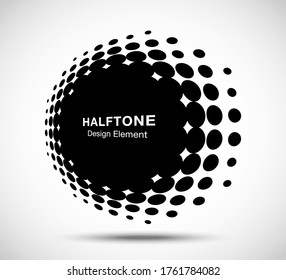

- #GRAPHIC CONVERTER FOR MAC HALFTONE IMAGES UPDATE#
- #GRAPHIC CONVERTER FOR MAC HALFTONE IMAGES MANUAL#
#GRAPHIC CONVERTER FOR MAC HALFTONE IMAGES MANUAL#
Manual vectorization is possible, but it can be tedious.Īlthough graphics drawing programs have been around for a long time, artists may find the freehand drawing facilities are awkward even when a drawing tablet is used. An illustration program allows spline knots to be adjusted for a close fit. Curves in the original image can be approximated with lines, arcs, and Bézier curves. Then a person can manually trace the elements of the image using the program's editing features. Once there is a machine-readable bitmap, the image can be imported into a graphics editing program (such as Adobe Illustrator, CorelDRAW, or Inkscape). If the image is not yet in machine readable form, then it has to be scanned into a usable file format. Manual vectorization of complicated shapes can be facilitated by the tracing function built into some vector graphics editing programs. Curves make the conversion more complicated. The original image did not have any curves (except for the text), so the conversion is straightforward. The illustration has a few geometric shapes and a lot of text it was relatively easy to convert the shapes, and the SVG vector format allows the text (even subscripts and superscripts) to be entered easily. That was the case for the vectorization of a technical illustration about neutrinos. A person could look at the image, make some measurements, and then write the output file by hand. The company may then acquire a vector format by scanning and vectorizing a paper copy of the logo. Although the graphics firm used a vector format, the client company may not have received a copy of that format. A company may have commissioned a logo from a graphic arts firm. Vectorization is also used to recover information that was originally in a vector format but has been lost or has become unavailable. Vectorization can be used to recapture some of the information that was lost. Only the results of these operations (the pixels) are saved in the resulting bitmap the drawing and filling operations are discarded. These programs allow users to make simple illustrations by adding text, drawing outlines, and filling outlines with a specific color. Personal computers often come with a simple paint program that produces a bitmap output file.
#GRAPHIC CONVERTER FOR MAC HALFTONE IMAGES UPDATE#
Vectorization can be used to update images or recover work. Common vector formats are SVG, DXF, EPS, EMF and AI. Programs that do raster-to-vector conversion may accept bitmap formats such as TIFF, BMP and PNG. The input to vectorization is an image, but an image may come in many forms such as a photograph, a drawing on paper, or one of several raster file formats. Those images could have been originally made as vector images because they are based on geometric shapes or drawn with simple curves.Ĭontinuous tone photographs (such as live portraits) are not good candidates for vectorization. Synthetic images such as maps, cartoons, logos, clip art, and technical drawings are suitable for vectorization. And, just as with these other two operations, while rasterization is fairly straightforward and algorithmic, vectorization involves the reconstruction of lost information and therefore requires heuristic methods. Vectorization is the inverse operation corresponding to rasterization, as integration is to differentiation. In vectorization, the shape of the character is preserved, so artistic embellishments remain. For most applications, vectorization also does not involve optical character recognition characters are treated as lines, curves, or filled objects without attaching any significance to them. It is not examining the image and attempting to recognize or extract a three-dimensional model which may be depicted i.e. The task in vectorization is to convert a two-dimensional image into a two-dimensional vector representation of the image. Edges and filled areas are represented as mathematical curves or gradients, and they can be magnified arbitrarily (though of course the final image must also be rasterized in to be rendered, and its quality depends on the quality of the rasterization algorithm for the given inputs). Ideally, a vector image does not have the same problem. Images of sharp edges become fuzzy or jagged.

The halftone dots, film grains, and pixels become apparent. If the image is magnified enough, its artifacts appear. While such an image is useful, it has some limits. In the picture, scaling the bitmap reveals the pixels while scaling the vector image preserves the shapes.Īn image does not have any structure: it is just a collection of marks on paper, grains in film, or pixels in a bitmap. The bitmap image is composed of a fixed set of pixels, while the vector image is composed of a fixed set of shapes. This image illustrates the difference between bitmap and vector images.


 0 kommentar(er)
0 kommentar(er)
